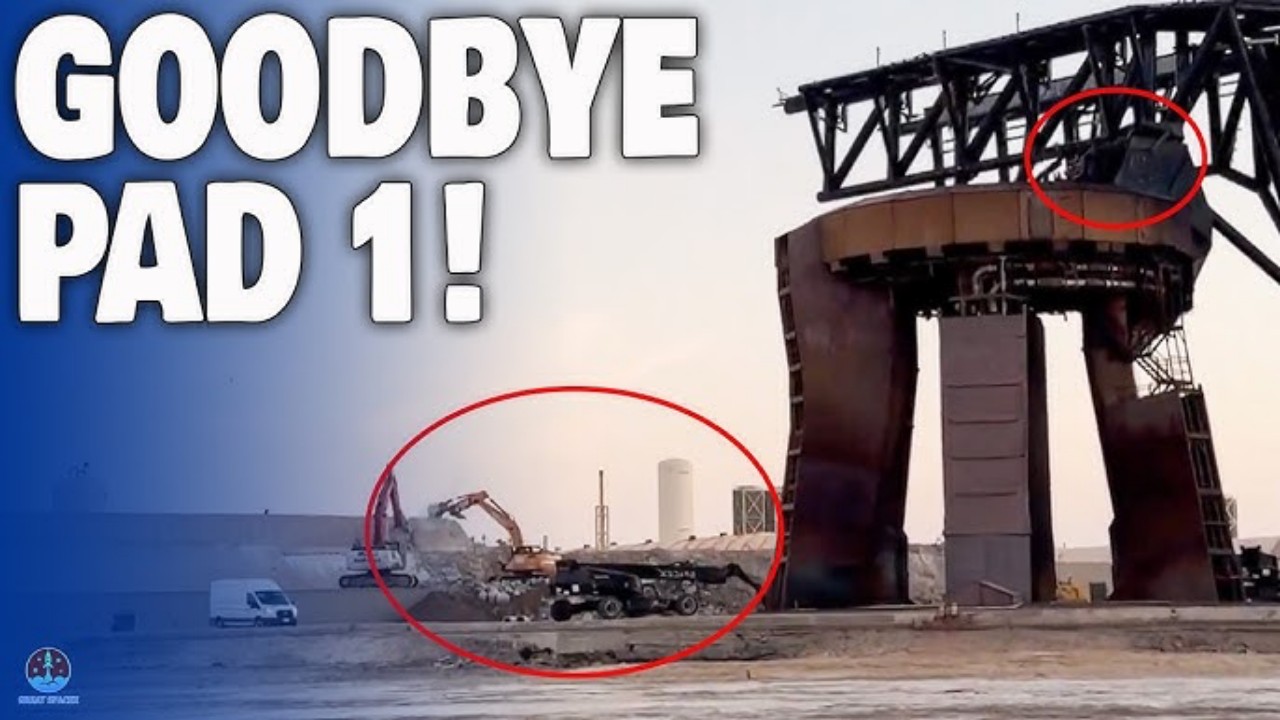The transition from Starship V2 to the next-generation Starship V3 is now in full swing at Starbase (Texas), and the most visible sign of this evolution is the overhaul of the launch infrastructure — especially at Launch Pad 1 (Pad 1).
While the launch vehicle often draws the headlines, the supporting infrastructure — the launch mount, tank-farm, tower, arms, plumbing and more — is undergoing major redesigns. The old configuration that served Starship V2 simply will not meet the demands of V3. In this post we’ll dive into how SpaceX is upgrading Pad 1, what the changes mean, and why the timeline and implications matter.
Why Pad 1 Needs a Major Upgrade
From V2 to V3: The new demands
The V2 era of Starship — with its flight stack of booster + upper stage — has been fruitful, but the architecture is evolving. The upcoming V3 generation is expected to bring increased mass, higher performance, more intense engine plume, and higher launch cadence. As one article puts it:
“With the sunsetting of Pad 1 in its current state following the success of Flight 11, SpaceX is moving forward with Pad 2’s completely new overhauled design… Meanwhile, Pad 1 will begin the process of being updated to the new launch mount and flame trench design.” Space Scout+2NASASpaceFlight.com+2
Key takeaways:
- The old infrastructure (arms, mounts, tank-farm, deluge systems etc.) was built for earlier flights and earlier vehicle specs. Its future usefulness is limited. NASASpaceFlight.com
- V3 requires higher thermal loads, greater structural load capacity, faster propellant loading, and higher cadence.
- Pad 1 is thus not just being tweaked — it’s being re-imagined from the ground up.
What Pad 1 achieved (and why it’s time to move on)
Over its lifetime, Pad 1 has been the workhorse of the Starship programme:
- It supported 11 full stack flights and many test events. NASASpaceFlight.com+1
- It hosted the iconic “chopstick” arms catching boosters, the inverted water-deluge system, the six-legged Orbital Launch Mount (OLM) foundation, etc.
- In short: it carried the programme through its early challenges, rapid iteration cycles, and proven successes.
But the same features that made it revolutionary are now constraints when viewed through the lens of what comes next. For Pad 1 to serve a new generation of rockets, a major makeover is necessary.
Major Upgrades Underway at Pad 1
Let’s explore the upgrade path in detail, stage by stage — what’s being replaced, what’s being invented anew, and how the pieces come together.
Removal & Preparation
Chopsticks, pusher systems & lift pins
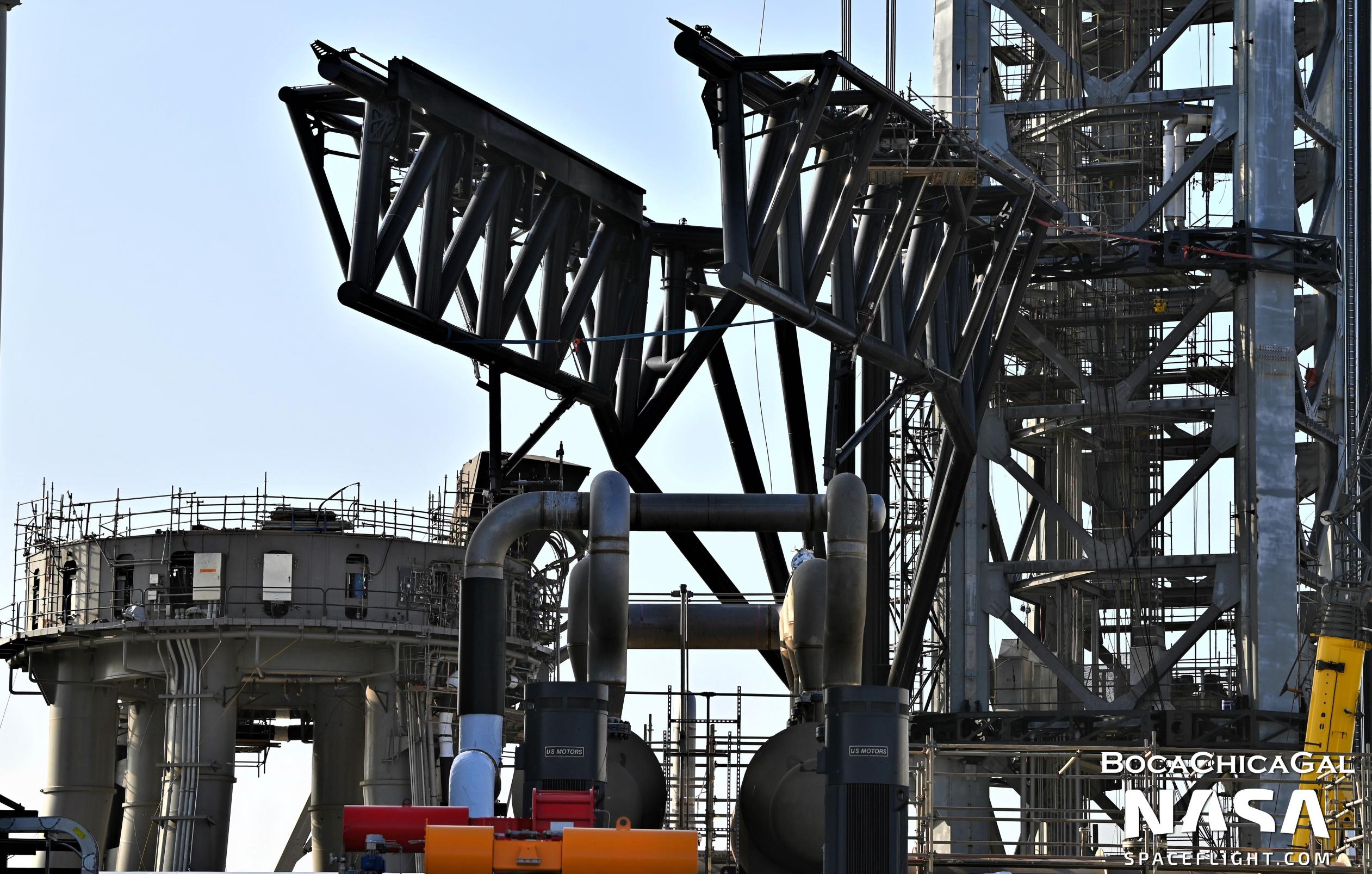

6
- The “chopsticks” arms — used to catch returning booster stages — are being dismantled and removed because their geometry and load-handling characteristics need to change for V3.
- The pusher system (which helped align the vehicle) was removed; lift pins detached. These steps signal the lifting & catching architecture is being reworked.
- One key sign: the cable connected to the travelling block at the base of the chopsticks disappeared, meaning the arms will remain stationary during upgrade rather than being operable.
Tank farm & support systems

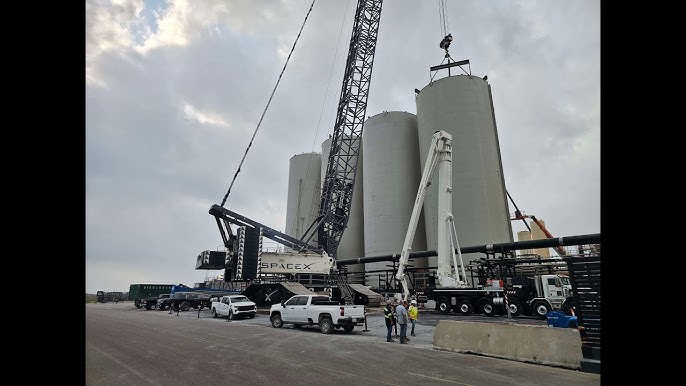
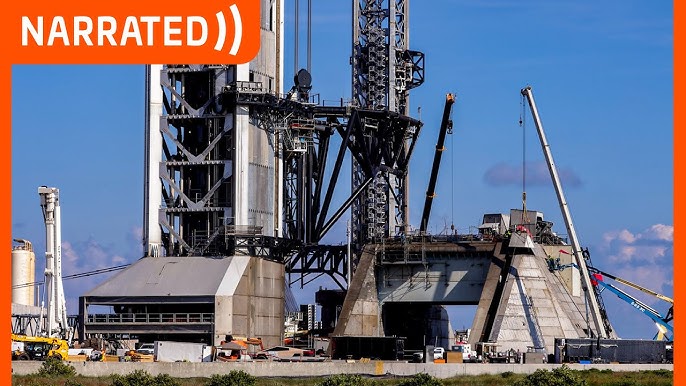
6
- In the surrounding tank-farm, important support items — the LOX pump for example — have been removed, signalling a pause in major tank-farm operations.
- The protective berm near Pad 1 was demolished, clearing space for heavy equipment and future expansion.
- The removal of the LOX pump strongly suggests a complete overhaul of the tank-farm: larger tanks, more efficient layout, higher cadence support.
Launch mount & tower work


6
- Beneath the launch tower, the big steel water-cooled plate (part of the OLM) is being removed — marking the “end of the old mounts era”.
- After clearing, the ground will be excavated for a new flame trench — critical for diverting the extreme exhaust of the upcoming vehicle.
- The foundation will be poured anew: concrete, steel plates, then installation of flame-deflector buckets and exhaust pipes. All designed with the future in mind.
Installation & New Systems
New chopsticks, catching mechanisms & landing rail
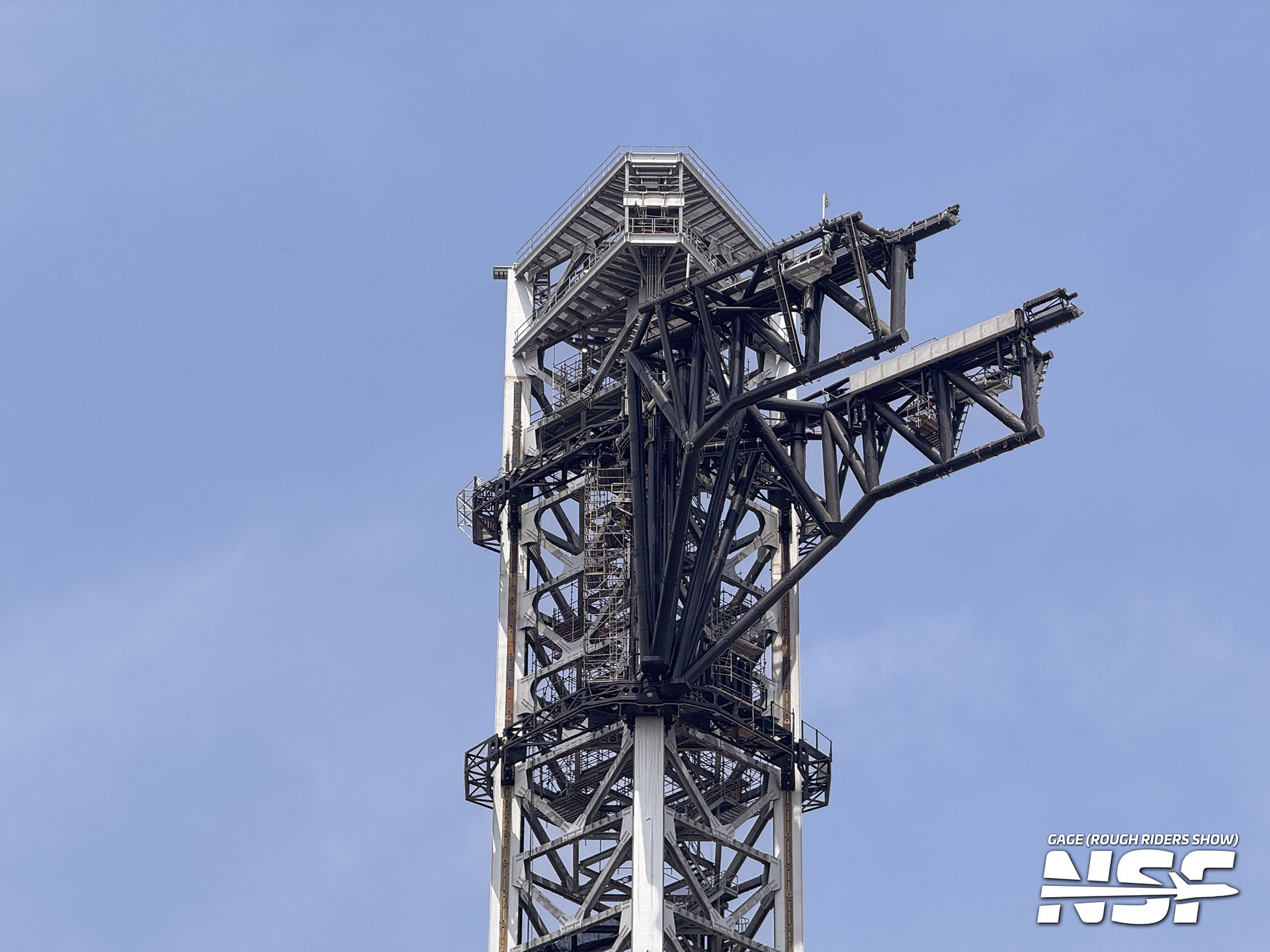
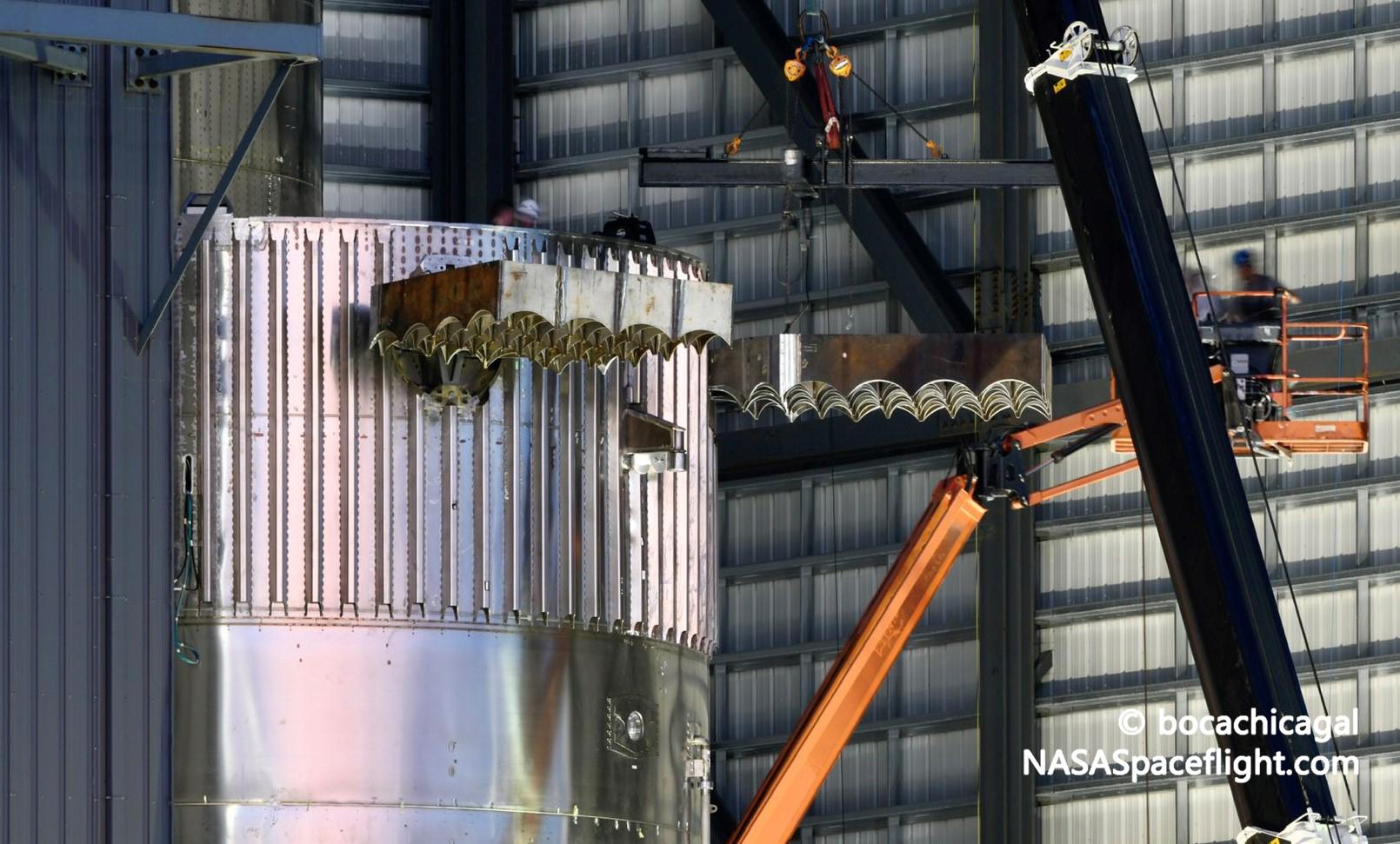
6
- Future arms will be shorter, lighter — the design at Pad 2 is already demonstrating this. The Weekly Spaceman+1
- The catching mechanism will be integrated with the grid-fins of the booster itself, meaning the arms are tuned to the vehicle’s structure.
- A redesigned landing rail and updated dampers will bring precision, durability, and greater reusability to booster recovery.
Upgraded flame trench & launch mount



6
- Unlike Pad 1’s older mount design, the new launch mount (as seen on Pad 2) includes a modern flame trench and diverter. NASASpaceFlight.com+1
- The old donut-shaped pad design is giving way to a cuboid launch mount with stronger, modern clamp-arms, improved cooling and structural robustness.
- These changes are essential for dealing with the massive thrust and heat-load of the V3 stack.
Expanded tank-farm & supporting infrastructure
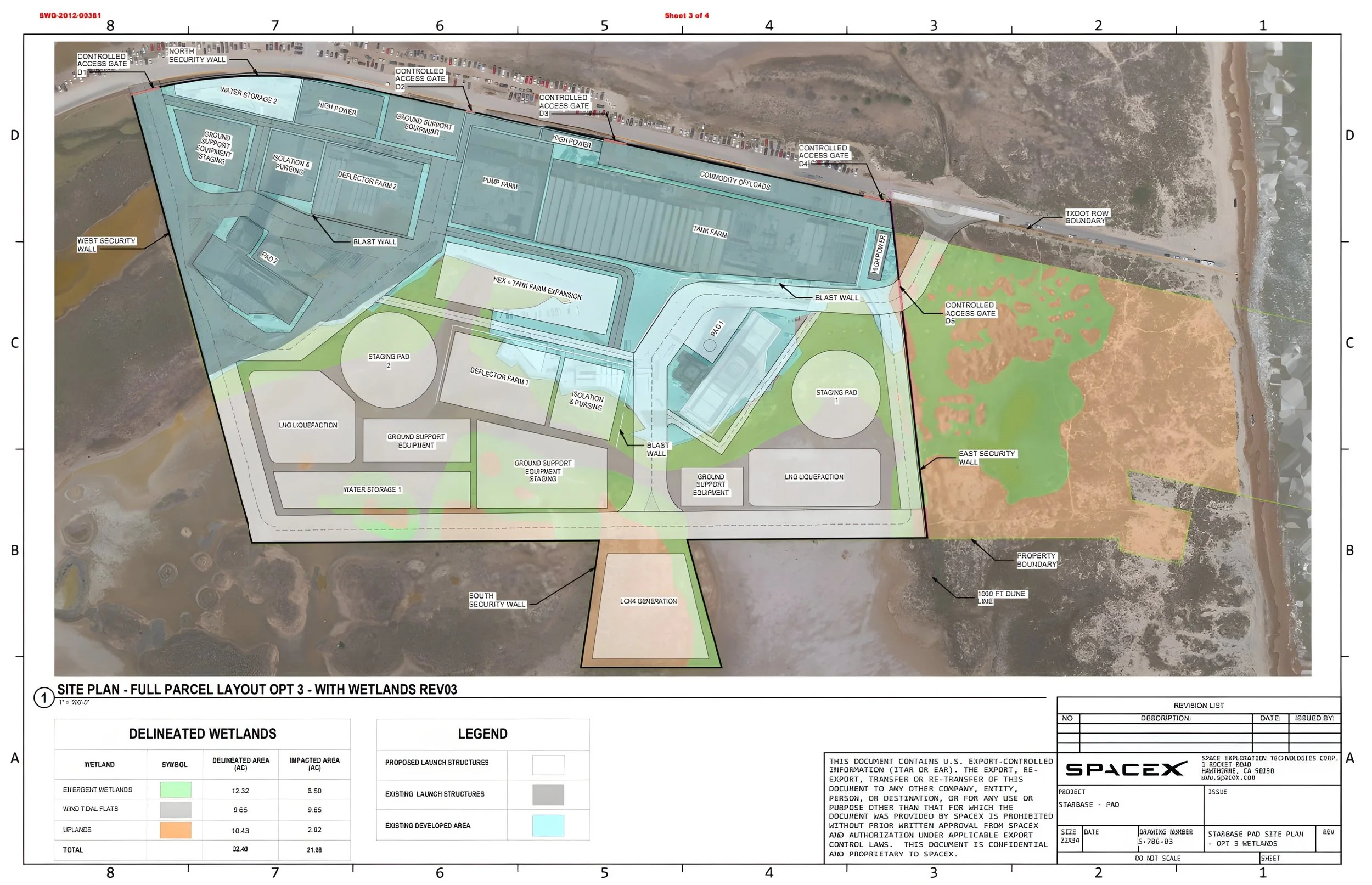
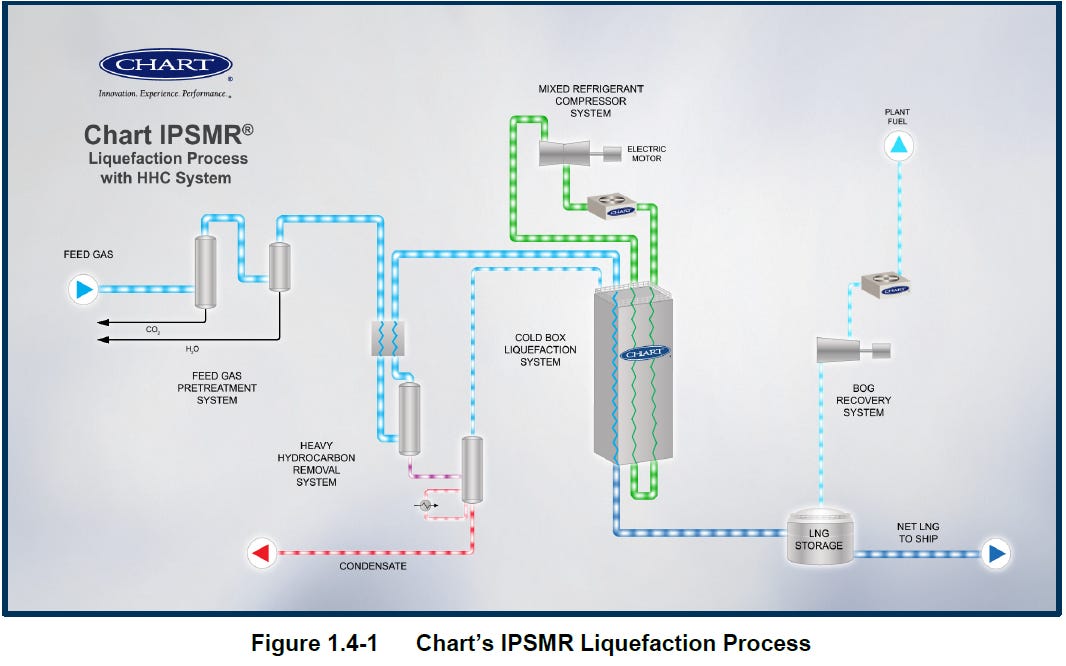
6
- Additional tanks and piping will support higher cadence launches and larger propellant loads.
- The layout is already based on lessons learned from Pad 1 and applied to Pad 2 (and eventually back-ported to Pad 1). NASASpaceFlight.com
- Expect new systems for methane/LNG liquefaction, natural gas pre-treatment, improved subcooling of propellants, and upgraded power/cryogenic infrastructure.
Timeline & What to Expect
Where we are now
- After 11 official launches and many tests, Pad 1 has essentially reached the end of its current configuration. NASASpaceFlight.com+1
- The dismantling and removal phase is underway: chopsticks removal, tank-farm pump removal, foundation plates taken out.
- Preparatory works (venting CO₂, depressurising systems) have been observed — signalling safe conditions for hardware modifications.
What’s next
- Major construction of the new launch mount, flame trench and supporting infrastructure will now begin in earnest.
- Shortening of the chopstick arms, installation of new catching mechanisms, and restructuring of the lift and carriage systems.
- Excavation and foundation pour for the flame trench, then installation of exhaust pipes, flame deflectors, and structural supports.
- Tank-farm expansion and re-installation of propellant systems (LOX, methane pumps, subcoolers) aligned for higher cadence.
- Testing phase: lift tests, static fire tests, integrated pad-vehicle operations in the new configuration.
Projected timeline & readiness
- Many sources suggest that Pad 1’s transformation is in progress and targeting a return to operational launches early in 2026. Space Scout+1
- Meanwhile, development of Launch Pad 2 (Pad 2) is already ahead and may serve as a transitional site, benefitting from the upgraded design. NASASpaceFlight.com
- Realistically, while Pad 1 may come back sooner than expected, the full readiness will depend on vehicle readiness, regulatory approvals, and pad-testing success.
Implications of the Pad 1 Upgrade
For SpaceX and Starship
The upgrade signals several important things:
- SpaceX is committing to scaling up launch cadence: faster turnaround, more rapid re-use, larger vehicles.
- The infrastructure shift indicates a move from “test-bed era” (V2) to “operational era” (V3 and beyond).
- With improved pad architecture, the reliability and reusability goals of Starship become more feasible.
- The upgraded infrastructure supports not just Texas, but future operations in Florida (e.g., LC‑39A) and other sites.
For the broader space industry
- Pad-upgrades like this raise the bar for what launch infrastructure must support (massive thrust, reusability, high cadence).
- As other launch sites (Florida, etc.) adopt similar designs, the industry may shift toward more standardized heavy-launch infrastructure.
- Pads designed now will likely support human-rated missions (lunar, Mars) — meaning higher reliability and safety standards.
For enthusiasts and observers
- The visible progress (chopstick removal, trench excavation, tank-farm changes) is a sign that “big things” are ahead.
- For those following Starship launches, note that when Pad 1 returns, it will be under a significantly different configuration — so flight operations will look different.
- Tracking Pad 2’s progress gives hints about what Pad 1 will look like once complete.
Questions & Considerations
- Will Pad 1 or Pad 2 be ready first? Pad 2 is currently ahead in many respects, but Pad 1 has landscaping and modifications already in motion.
- What will be the launch cadence at Pad 1 once upgraded? While specific numbers aren’t confirmed, the improved tank-farm, propellant systems and mount architecture suggest multiple launches per year, much higher than early days.
- How will regulatory and environmental issues impact the timeline? Infrastructure upgrades of this magnitude often face permitting, environmental review and safety validation; these can introduce delays.
- How will this affect vehicle design? The upgraded pad is being tailored for the vehicle (V3) rather than vehicle being restricted by the pad — a positive shift.
Conclusion
The transformation of Pad 1 at Starbase is more than a facelift — it’s a full-scale launch-infrastructure reboot designed to match the ambitious next-phase of the Starship programme. From dismantling the familiar chopstick arms and old tank-farm pumps to excavating new flame trenches and installing upgraded catching mechanisms and mounts, every part of the pad is being re-imagined.
If all goes to plan, early 2026 could see Pad 1 back in action with a design that anticipates a future of higher cadence, larger vehicles, and more ambitious missions. As the launch site evolves, so too does the meaning of Starship’s mission: not just orbital flight, but sustainable access to space, lunar missions, Mars-bound journeys.
Stay tuned. The next chapter is being built beneath our feet — and the horizon is closer than we think.
FAQs
1. What is SpaceX Pad 1, and why is it being demolished?
Pad 1 is the original Starship launch pad at SpaceX’s Starbase in Boca Chica, Texas. After supporting 11 full-stack launches, the site is being demolished and rebuilt to handle the more powerful Starship V3. The older design cannot manage the increased thrust, heat, and cadence required for next-generation missions.
2. What is the difference between Starship V2 and V3?
Starship V3 introduces stronger materials, more efficient Raptors, and optimized structures for reusability and orbital refueling. It’s designed to support lunar and Mars missions, making the existing V2 infrastructure outdated.
3. When will Pad 1 be ready for Starship V3 launches?
Current projections indicate Pad 1 could be ready by early 2026, depending on construction progress, vehicle readiness, and FAA approval. This timeline aligns with SpaceX’s broader Starship V3 rollout.
4. What are the major changes happening at Pad 1?
Key upgrades include:
- Installation of a new flame trench and deflector system
- Shortened and lighter “chopstick” arms for booster catching
- Expanded tank-farm with modern cryogenic systems
- Redesigned Orbital Launch Mount (OLM) for higher loads
- Improved deluge and cooling systems
5. What happened to the old “chopsticks” on the tower?
The iconic chopstick arms used to catch boosters are being removed and replaced with new, smaller, more precise arms similar to those at Pad 2. The redesign supports V3’s booster integration and grid-fin catching system.
6. How does the new flame trench design help Starship V3?
The new flame trench and deflector buckets will safely redirect the extreme exhaust from 33 Raptor engines, preventing damage to the pad and nearby infrastructure — something that was challenging during early Starship V2 launches.
7. Will the tank-farm at Pad 1 change?
Yes. The tank-farm is being rebuilt with larger, more efficient liquid oxygen (LOX) and liquid methane (CH₄) tanks, modern pumps, and better thermal insulation. This enables faster fueling cycles and higher launch cadence.
8. What is happening to the Orbital Launch Mount (OLM)?
The original six-legged OLM is being dismantled and replaced with a stronger steel-reinforced mount that incorporates a water-cooled baseplate and flame trench integration, enhancing both durability and safety.
9. What is the purpose of shortening the chopstick arms?
Shorter arms reduce mass, improve precision, and increase control during booster catches. They also make maintenance and synchronization easier while aligning with V3’s grid-fin-integrated catching system.
10. Is Pad 2 now ahead of Pad 1 in development?
Yes. Pad 2 is currently more advanced, serving as the model for Pad 1’s rebuild. It already features the new flame trench, modern OLM, and updated chopstick arms. Once proven at Pad 2, these upgrades will be mirrored at Pad 1.
11. How will the Pad 1 upgrade affect launch cadence?
With improved fueling systems, cooling, and structural durability, Pad 1 could support multiple Starship launches per month once operational — far beyond the limited cadence of the early test era.
12. How does Pad 1’s rebuild compare with LC-39A in Florida?
LC-39A (Cape Canaveral) is also undergoing Starship pad construction, including a new flame trench and tower system. However, Pad 1 serves as the testing ground for new technology before it’s scaled to Florida and beyond.
13. What environmental changes come with the Pad 1 upgrades?
SpaceX is adding flame deflectors, better sound suppression, and water deluge systems to reduce environmental impacts from launches. The removal of the protective berm also allows for safer, more efficient tank-farm expansion.
14. How will the upgrades improve Starship’s reusability?
Enhanced catching systems, flame trench design, and tank-farm efficiency will allow SpaceX to recover and reuse boosters faster, minimizing wear-and-tear on vehicles and cutting turnaround time between launches.
15. What’s next after Pad 1 and Pad 2 upgrades?
After Pad 1 and 2, SpaceX is expanding to LC-39A and SLC-37 in Florida. The long-term goal is a network of Starship-ready pads capable of supporting over 100 launches per year, paving the way for Mars and Moon missions.
16. How do these upgrades fit into SpaceX’s Mars vision?
The Pad 1 rebuild is part of the infrastructure foundation for Elon Musk’s long-term goal — a self-sustaining city on Mars. Every pad upgrade brings Starship closer to routine, reusable, interplanetary flight.
Read More:
- Tesla rival’s ex-CEO makes shock prediction about Elon Musk’s future
- Tesla Full Self-Driving got a minor feature that’s a massive improvement
- Tesla dashcam video shows crazy plane crash avoidance maneuver
- Tesla Model Y reclaims elusive sales title in competitive market
- 2026 Tesla Model 2 Finally Goes on Sale in November! Elon Musk Confirms Official Price & Design

